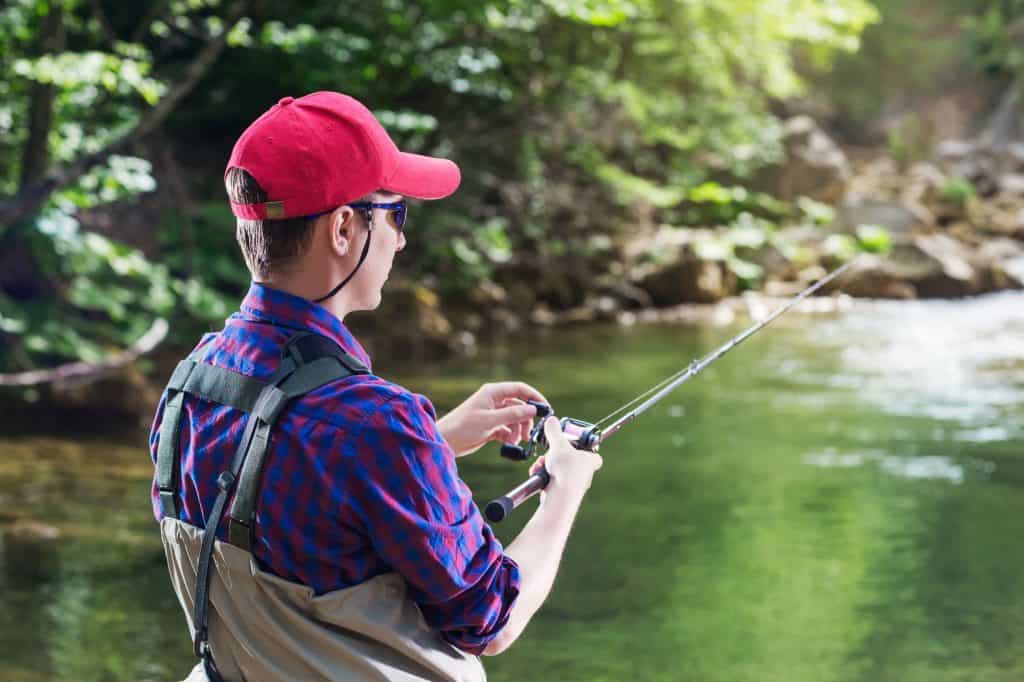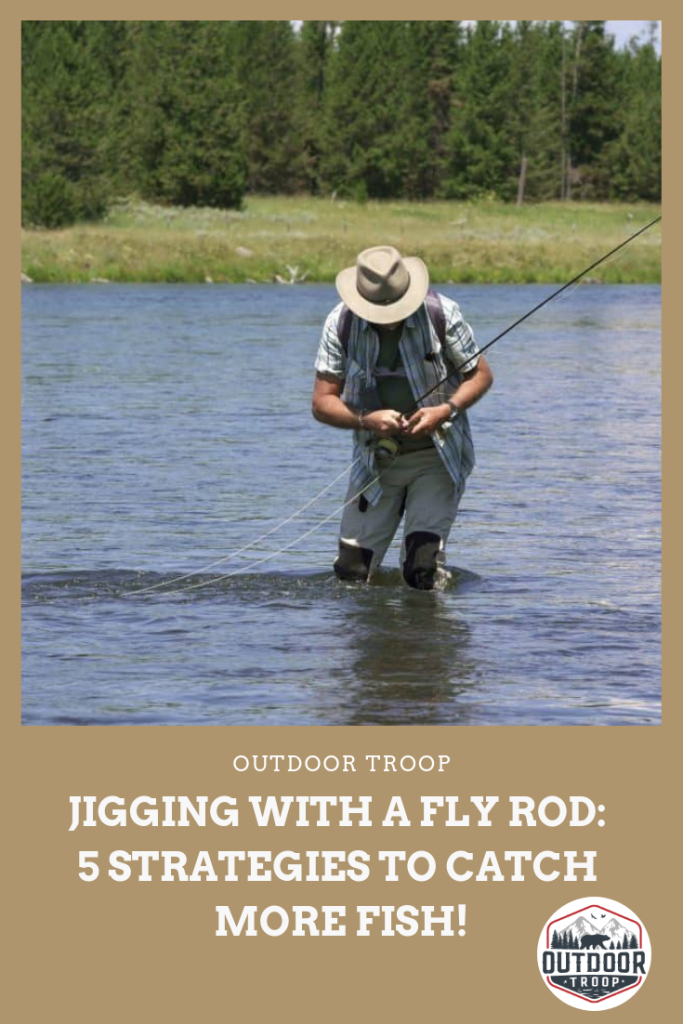
Jigging has become a popular sport for fly fishers, but can be difficult without the right strategies. There is nothing worse than loosing out on fish because of beginners mistakes. I have made a list of 5 different strategies to catch more fish jigging with a fly rod.
What jigging strategies help catch more fish? There are five top-notch jigging strategies:
- Get to know the waters you are fishing in
- Use a shorter rod
- Release your line after you’ve reeled past the target zone
- Use a braided line
- Always watch your line
Whether you are saltwater jigging, freshwater jigging, slow or fast jigging these techniques and strategies can help you catch more fish. They work great and can make all the difference when out jigging for fish.
1. Get to Know the Water You are Fishing in
There is a lot that goes into the strategy of getting to know the waters you are fishing in. Jigging is going to be similar wherever you fish but your techniques will need to change with each new body of water and each new type of fish.
There are 2 main reasons that it is a great strategy to get to know the waters you are fishing in when planing on jig fishing, although, there are numerous reasons any fisher ever should spend their time doing research.
When you do your jig research you learn these important tips that will help you on your trip.
Know What Color Jig to Use
You can be out on the water all day jigging your heart out and then a new guy shows up using the same technique and within a few hours has a nice collection of fish.
And all because they used the right color jig. Some fish are attracted to the old faithful blue and black jig while others will need a more colorful jig to catch their attention.
It will save you a lot of time and energy out on the water if you do some pre-work and look up where you will be fishing and what other fishermen have said works for them in that area.
Sometimes doing the research means being out on the water and trying new jig after jig to see what colors and patterns invoke the most bites, so you can use that information again and again.
There are some people who can go out and catch a five-pound bass out of the same pond year after year because they did their research and know what color of jig to use.
Know What Types of Fish Typically Bite With Jig Fishing in That Area
Different fish live in different areas, and the fish that bite when you go jigging where you are from may not be same as the place you are visiting, so do the research so that you can know what type of fish you should expect and which ones you should aim for.
If you are from California and are used to jigging for Yellow Tail fish then if you move or take a trip to Australia you are going to find a lot more bass and kingfish being jigged for, so you will need to get to know those waters.
Know What Type of Jigging Technique to Use
Some areas and waters depending on the fish require a fast jig while others need a slow jig, but you can’t know that until you do some research about where you are and how the fish behave.
I would rather make some calls and talk to some anglers that are experienced with those particular waters then spend all day trying to figure out how to best get the fish to bite.
In the end, doing research beforehand can help you learn the techniques and styles that are going to benefit you the most so that you can make the most of your time out on the water.
2. Use a Shorter Rod

Longer rods are great for open waters and long casts but with jigging, because most of your fishing will be vertical a shorter rod is better so that you have more control.
Most people who jig fish will use a 7-foot heavy action or heavy power rod to help them stay stabilized and for support when reeling in fish. You can shop around and find the brand you like the best.
Also with a shorter rod, you can tuck the end under your arm to save your back some work as you are making the jigging motions that can get really tiring.
3.Release Your Line After You’ve Reeled Past the Target Zone
One of the best lessons I have ever had when it comes to jigging is to spend as much time in the target zone as possible. whether that target zone is at the bottom or in the middle of the water.
Say that your target fish live about 30 to 35 feet above the bottom of the water when you’ve reeled your line in 65 to 80 feet above the ground let your jig lose again and once it has hit the bottom start over again.
You don’t have to bring your jig all the way to the top each time if you will let your jig drop a few feet after the target zone you will spend more time around your targeted fish and have better success when trying to reel one in.
4. Use a Braided Line
So many good baits have been lost jigging because the wrong line has been used. When you are jigging you need a stronger line than just a regular fluorocarbon line, but it is used a lot because it is stronger than monofilament lines.
With jig fishing though you need something stronger than even fluorocarbon so that your baits don’t break off.
Using a braided line helps to keep your line strong and your jig protected.
5. Always Watch Your Line
Most anglers know that when they go fishing they need to watch their line. That is a basic 101 rule when it comes to fishing, but with jigging, it can be extra specific.
A lot of people will drop their line down to the bottom without really watching it, but some fish like bass have been known to bite at jigs that are on their way down as well as on their way up.
Nobody wants to miss out on a nice fish, so vigilante line watching can be a great key that will unlock a day full of catches and success or lock all those fish away if done poorly.
These tips have worked for many an angler and hopefully will work for you as you go about your fishing days. Jigging is a great way to fish with a fly rod and makes for a fun day.
Related Questions:
What is a fishing jig? A fishing jig is a type of lure that is used for jigging. It is a lead sinker that has a hook molded into it. When it is pulled through the water it makes a twitching motion. Jigs are normally covered by a soft material to help attract fish.
What is the best bass jig? Some of the most popular bass jigs are the Arkie jig or the football jig, but the swim jig, finesse jig, and the punch jig are also popular for bass fishers. It depends on the area you are in and your personal preference.
What is a casting jig? A cast jig is a multipurpose jig that is normally around half an ounce and usually features a round Arkie style, although they can have a flat bottom head so that they stand off the bottom of the water. You can use casting jigs with and without a rattle depending on your preference.

